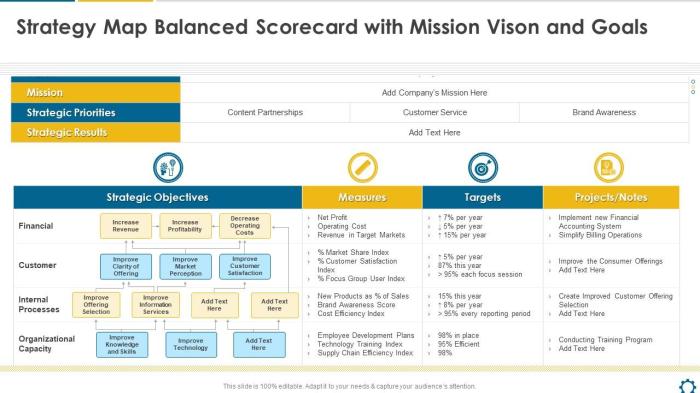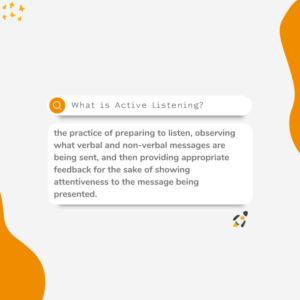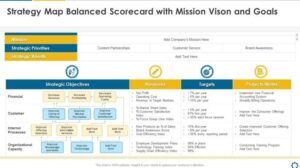
Balanced scorecard planning serves as a strategic tool that empowers organizations to transform their vision into actionable objectives. This approach not only aligns business activities with the overall strategy but also enhances decision-making by providing a comprehensive framework that encompasses financial, customer, internal, and growth perspectives. By leveraging this multifaceted approach, businesses can ensure that every aspect of their operations contributes to long-term success.
Understanding the intricacies of balanced scorecard planning is essential for modern businesses aiming to stay competitive. This methodology encourages a holistic view of organizational performance, enabling leaders to prioritize initiatives that drive innovation and improve efficiency. As we delve deeper into this topic, we will explore practical implementations, benefits, and best practices that can enhance business performance across various sectors.
Introduction to Balanced Scorecard Planning
Balanced scorecard planning is a strategic management tool that helps organizations translate their vision and strategy into a coherent set of performance measures. Its significance in the modern business landscape lies in its ability to provide a holistic view of organizational performance, going beyond traditional financial metrics. By incorporating multiple perspectives, businesses can ensure that all aspects of their operations are aligned with their strategic objectives.The balanced scorecard framework is built around four key perspectives: financial, customer, internal business processes, and learning & growth.
Each perspective contributes uniquely to the overall strategic vision. The financial perspective focuses on the financial health of the organization through metrics like revenue growth and profitability. The customer perspective emphasizes customer satisfaction and retention, highlighting the importance of understanding customer needs. The internal business processes perspective examines the efficiency and effectiveness of operations, while the learning & growth perspective addresses the organizational culture and employee development, which are crucial for long-term success.Integrating balanced scorecard planning with strategic planning ensures that organizations remain focused on achieving their objectives while adapting to changing market conditions.
This alignment fosters a culture of continuous improvement and accountability, driving performance across all levels of the organization.
Implementation of Balanced Scorecard
Implementing a balanced scorecard in an organization requires a structured approach to ensure success. The following steps are essential for effective implementation:
- Define the Vision and Strategy: Clearly articulate the organization’s mission and strategic goals.
- Identify Key Performance Indicators (KPIs): Select relevant KPIs that reflect the organization’s objectives across all four perspectives.
- Develop the Scorecard: Create a balanced scorecard template that incorporates the chosen KPIs.
- Communicate and Educate: Ensure that all employees understand the balanced scorecard and its importance to their roles.
- Link Scorecard to Performance Management: Integrate scorecard metrics into performance evaluations and incentive systems.
- Review and Revise: Regularly assess the effectiveness of the balanced scorecard and make necessary adjustments based on feedback and performance data.
To integrate balanced scorecard metrics into daily operations, organizations should adopt best practices such as regular reporting on scorecard performance, creating dashboards for real-time data visualization, and holding periodic review meetings to discuss progress.Several industries have successfully implemented balanced scorecards to enhance performance. For instance, the healthcare sector has utilized scorecards to improve patient satisfaction and operational efficiency, while manufacturing companies have adopted them to streamline production processes and reduce costs.
Role of Balanced Scorecard in Business Innovation
Balanced scorecard planning plays a crucial role in fostering business innovation by encouraging organizations to explore new ideas and approaches. By emphasizing metrics that promote innovative thinking, teams can cultivate a creative environment. Metrics such as the number of new products launched, the percentage of revenue from new services, and customer feedback on innovative features can motivate teams to think outside the box.Furthermore, balanced scorecard planning aids in risk management for innovative projects.
By identifying potential risks early in the planning process and incorporating them into the scorecard, organizations can develop strategies to mitigate these risks while pursuing innovative initiatives.
Balanced Scorecard in International Business
Applying balanced scorecard planning in an international context presents unique challenges, such as cultural differences and varying market conditions. Organizations must consider local customs, consumer behavior, and regulatory environments when designing their scorecards.A comparative analysis of balanced scorecard application across different cultures reveals that customization is often necessary. For example, companies operating in collectivist cultures may prioritize customer satisfaction metrics differently compared to those in individualistic societies.
Adapting the balanced scorecard to align with global market strategies ensures that organizations can effectively address the diverse needs of their international stakeholders.
Balanced Scorecard for Business Management
Business management can significantly benefit from balanced scorecard techniques, as they provide a structured approach to performance evaluation. By using balanced scorecard metrics, managers can assess their performance against strategic objectives and make informed decisions that align with the organization’s goals.A framework for evaluating managerial performance through balanced scorecard metrics might include categories such as leadership effectiveness, operational efficiency, and employee engagement.
This comprehensive evaluation approach allows managers to balance the needs of various stakeholders, ensuring that both employee satisfaction and organizational performance are prioritized.
Marketing and the Balanced Scorecard

Designing a balanced scorecard tailored for marketing strategies involves selecting metrics that accurately reflect marketing effectiveness. Key performance indicators may include customer acquisition cost, return on marketing investment, and brand awareness levels.Marketing teams can utilize these metrics to gauge campaign effectiveness, enabling them to adjust strategies based on data-driven insights. Successful case studies from companies like Coca-Cola or Nike demonstrate how marketing departments can leverage balanced scorecards to enhance brand positioning and customer engagement.
Enhancing Business Productivity with Balanced Scorecard
Key performance indicators that enhance productivity through balanced scorecard planning may encompass metrics such as sales per employee, operational efficiency ratios, and project completion rates. By closely monitoring these indicators, organizations can identify areas for improvement and implement strategies that drive productivity.The impact of balanced scorecard on employee engagement is significant, as it fosters a sense of accountability and transparency.
When employees understand how their performance contributes to organizational success, they are more likely to be engaged and motivated.Tracking productivity improvements over time can be achieved by utilizing scorecard data to set benchmarks and monitor progress. Regularly reviewing these metrics allows organizations to celebrate successes and identify challenges that may need addressing.
Balanced Scorecard in the Restaurant Industry
The restaurant industry faces specific challenges when implementing balanced scorecard planning, including high employee turnover and fluctuating customer preferences. Successful examples of restaurants using balanced scorecards for growth often focus on enhancing customer experience and operational efficiency.For instance, a popular chain might integrate customer feedback into their scorecard metrics, allowing them to adapt their menu offerings based on consumer preferences.
This customer-centric approach can lead to increased satisfaction and loyalty.
Balancing Risk Management and Performance Measurement
Balanced scorecard planning aids in identifying and managing business risks by incorporating risk assessment into the performance measurement framework. By creating criteria for evaluating risk management effectiveness, organizations can ensure that they remain proactive in addressing potential challenges.The relationship between performance measurement and risk mitigation strategies is critical. By tracking performance metrics, organizations can identify early warning signs of potential risks and develop strategies to mitigate them before they escalate.
Strategic Planning with Balanced Scorecard
Aligning strategic planning efforts with balanced scorecard methodologies involves a step-by-step guide, starting with defining strategic objectives and selecting relevant metrics. Regularly revising strategic plans based on scorecard feedback ensures that organizations remain agile and responsive to changing market dynamics.Balanced scorecard methodologies can aid in forecasting and scenario planning, allowing organizations to simulate various outcomes based on different strategic choices.
This predictive capability enhances decision-making and ensures that organizations are well-prepared for future challenges.
Team Building and Balanced Scorecard
Using balanced scorecard planning to enhance team collaboration involves establishing shared goals and metrics that align with organizational objectives. A framework for evaluating team performance based on scorecard metrics can foster a culture of accountability and transparency within teams.Identifying ways to encourage collaboration through balanced scorecard principles can lead to improved team dynamics and overall performance. When team members understand how their contributions impact the broader organizational goals, they are more likely to work cohesively.
Communication and Balanced Scorecard
Balanced scorecard planning enhances workplace communication by providing a common language and framework for discussing performance. Creating guidelines for sharing balanced scorecard insights ensures that team members and stakeholders remain informed and engaged.Transparency is key to maintaining effective communication channels through scorecard metrics. By regularly updating employees on performance and strategic objectives, organizations can build trust and nurture a culture of open dialogue.
Future Trends in Balanced Scorecard Planning
Emerging trends in balanced scorecard applications across industries indicate a shift towards digital solutions that integrate real-time data and analytics. Technology plays a significant role in the evolution of balanced scorecard methodologies, enabling organizations to access insights more efficiently.Predictions for the future of balanced scorecard planning suggest that as businesses continue to embrace digital transformation, the use of artificial intelligence and machine learning will enhance the accuracy and relevance of performance metrics.
Organizations that adapt to these changes will likely maintain a competitive edge in their respective markets.
Ultimate Conclusion

In conclusion, balanced scorecard planning emerges as a vital methodology for organizations seeking to balance strategic objectives with operational performance. By adopting this framework, businesses can foster a culture of accountability and continuous improvement, ultimately paving the way for sustained growth and innovation. As we look to the future, the evolving landscape of balanced scorecard applications promises even greater opportunities for organizations willing to adapt and thrive.
FAQs
What is the main purpose of balanced scorecard planning?
The main purpose is to align business activities with the organization’s vision and strategy, ensuring all efforts contribute to overall performance.
Can small businesses benefit from balanced scorecard planning?
Yes, small businesses can utilize balanced scorecard planning to clarify their goals and track performance across various dimensions effectively.
How often should businesses review their balanced scorecard?
Businesses should review their balanced scorecard regularly, typically quarterly or annually, to adapt to changes in strategy or market conditions.
What role does technology play in balanced scorecard planning?
Technology enhances balanced scorecard planning by providing tools for data collection, analysis, and visualization, making it easier to track performance metrics.
How does balanced scorecard planning help in risk management?
It helps identify potential risks by linking performance metrics to strategic objectives, allowing organizations to proactively address issues before they escalate.





